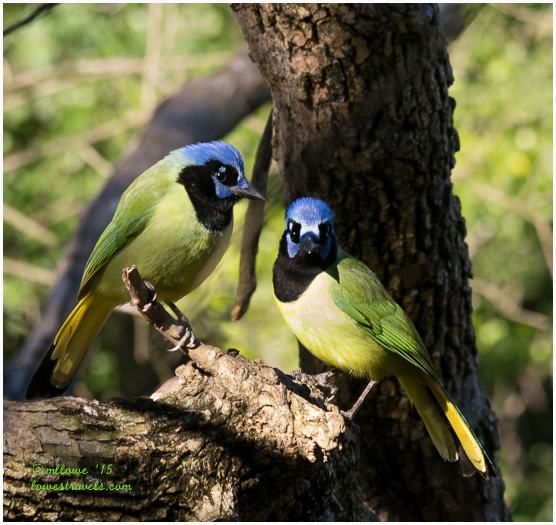
The Rio Grande Valley (RGV) is reputedly one of the nation’s top spots for bird-watching. What the valley lacks in breathtaking views and warm winter weather, it makes up for in its array of bird species – some of which are seen only in this area. RGV is nestled into the tip of South Texas, with the Rio Grande River running along its southern border and serving as the Mexico/U.S. border. The diverse habitats found in the area – which is a convergence of two major migratory flyways – is the primary reason for the remarkable number of birds seen here. The nine valley communities partnering with Texas Parks and Wildlife and the U.S. Fish and Wildlife Service capitalized on that, and with birding a year-round event the tourism economy has been buoyed.
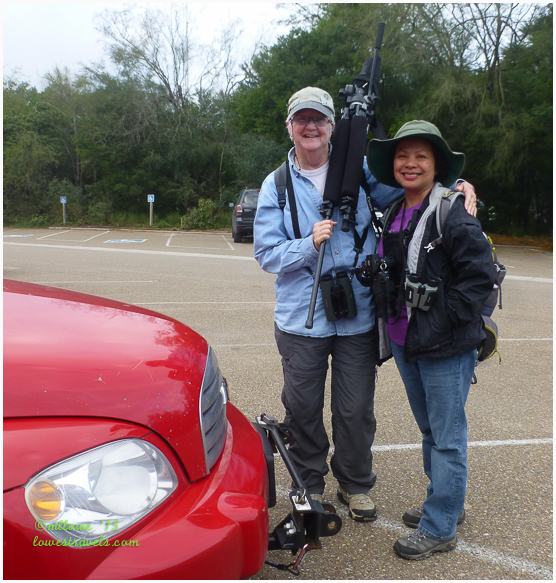
And was our adventure together a success? Judge for yourself!
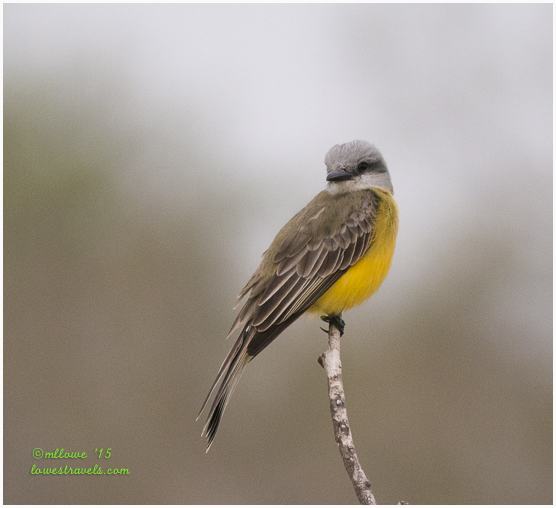
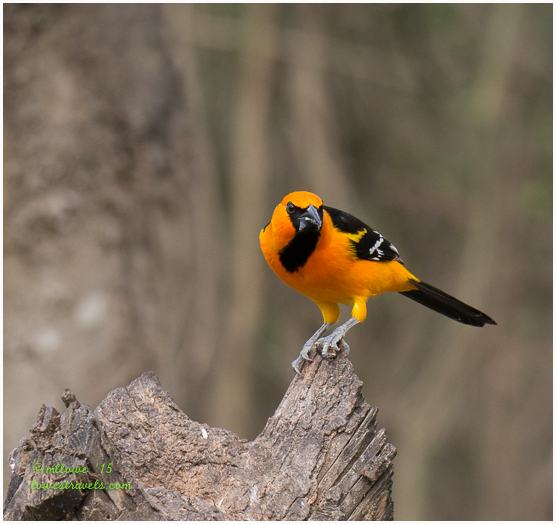
Finding birds in this vast area can be a daunting task, but Birdie made it easy as she had been here before and was familiar with the valley. We listened, we watched, we identified and we photographed many birds at Estero Llano Grande State Park, Frontera Audobon Society, Edinburg Scenic Wetlands and at the Santa Ana National Wildlife Refuge. As you may have guessed I took many, many pictures of the most popular Texas specialties that you only see here in the southern part of the Lone Star State.
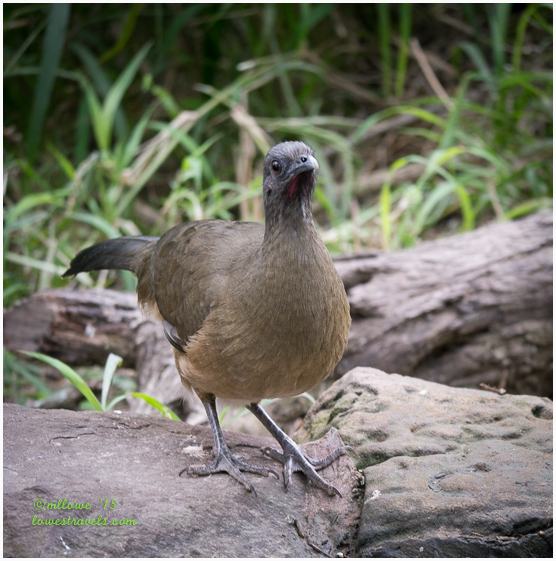
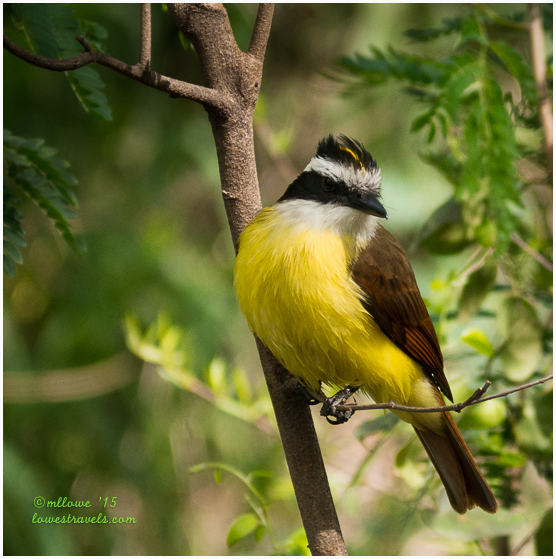
Tagging along with Birdie, I became more in tune to listening to a bird’s sound. I learned that birds can be more easily detected and identified by ear than by eye. And with the help of her high-powered Swarovski spotting scope, I manage to observe birds I would usually have ignored or missed. With amazing clarity, the scope made the bird’s field marks much easier to identify. Frankly, my new binoculars were put to shame after trying out her gear!
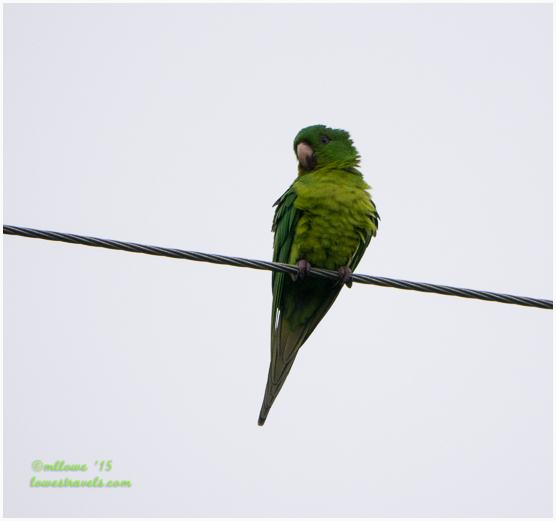


Birding is big business here. I oftentimes saw parking lots packed at the various birding centers, even on weekdays. Families, couples and individuals could be seen lugging binoculars, cameras and field guides out to visit their feathered friends. Birds are not the only winged wonders that attract people here. In October, butterflies are the main spectacle, as folks witness migrating butterflies resting during their long journey south.
Not only did I learn a lot after just a few days hanging out with Birdie, but I also had a great time interacting with nature! Thank you, Birdie, for your time, knowledge and patience. I hope we meet again somewhere down the road. To see more of my recent bird captures, click here to see my updated bird gallery page.

During my adventures, Steve was completing the last of Betsy’s little maintenance items, and she’s ready to head on down the road at the end of the month. He was finally willing to join me for a little bird watching, since we probably won’t be back here for a long time (hey, he likes birds too – just not as much as I do!). We checked out the birding centers at Quinta Mazatlan, the National Butterfly Center, the Old Hidalgo Pumphouse, South Padre Island and at the Laguna Atascosa Wildlife Refuge. Of course, he found a way to include interesting lunch stops and some other tours along the way! While birding is very rewarding at the World Birding Centers, the two unaffiliated Wildlife Refuges that we visited, the Santa Ana National Wildlife Refuge and the Laguna Atascosa National Wildlife Refuge also offered more to admire than just birds. Santa Ana National Wildlife Refuge The Santa Ana NWR is riparian forest, with Spanish Moss draping Cedar Elm, Texas Ebony and Mexican Ash trees.
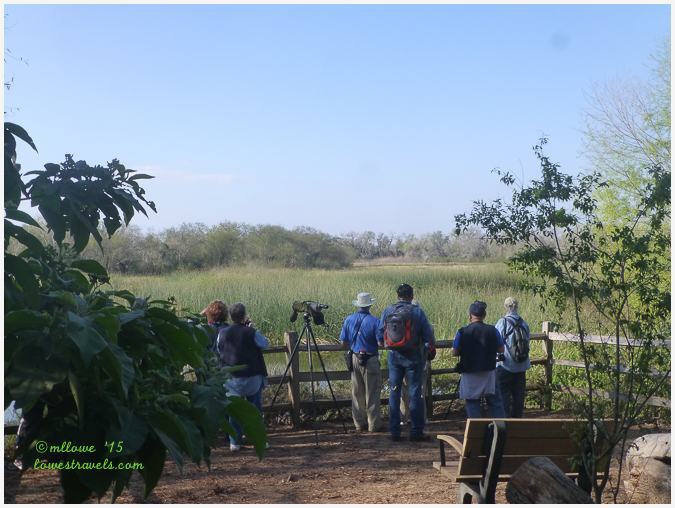
Laguna Atascosa National Wildlife Refuge The Laguna Atascosa NWR is described as a landscape of coastal prairie, thorn forest, sand and clay dunes, and tidal flats set within thousands of acres of wetlands. It borders the lower Laguna Madre and was established in 1946 to provide habitat for wintering waterfowl and other migratory birds, principally redhead ducks.
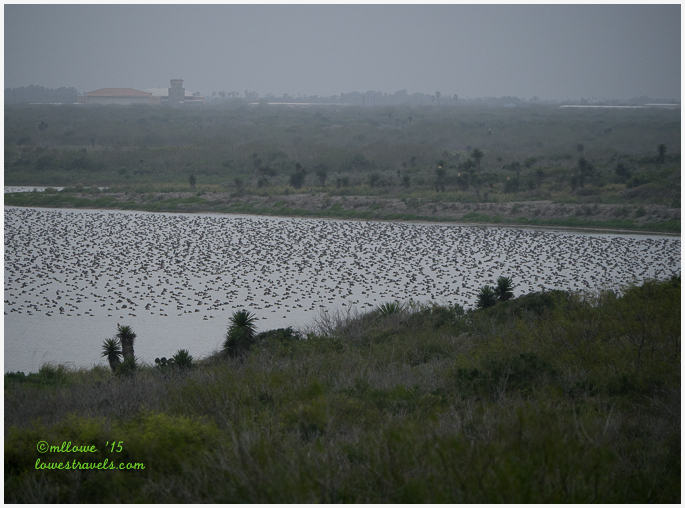
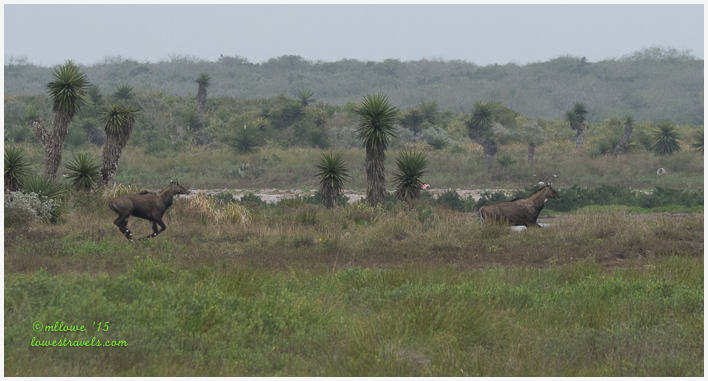
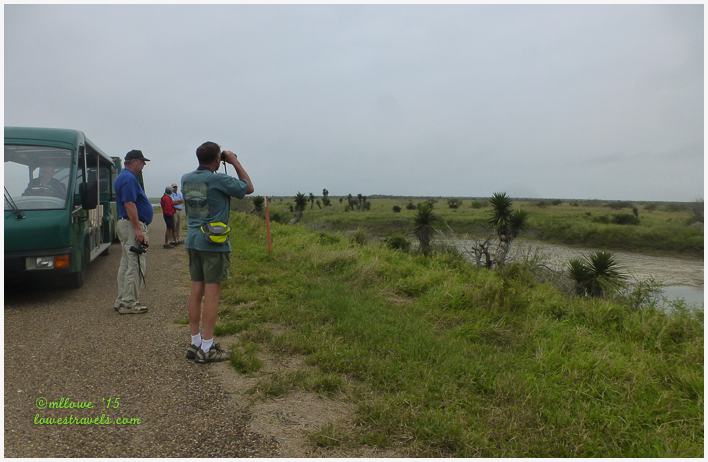
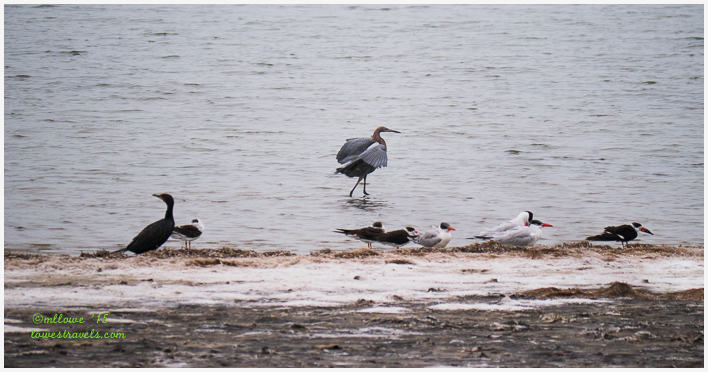
Finally, we made it to the South Padre Island Birding and Nature Center, where we enjoyed even more sightings of coastal birds…

…some American Wideon quack-quacks being monitored by a Great Blue Heron…  …and the American Skimmers were busy fishing.
…and the American Skimmers were busy fishing.

For the last time, I caught a glimpse of one of my favorite coastal birds, the Roseate Spoonbill:
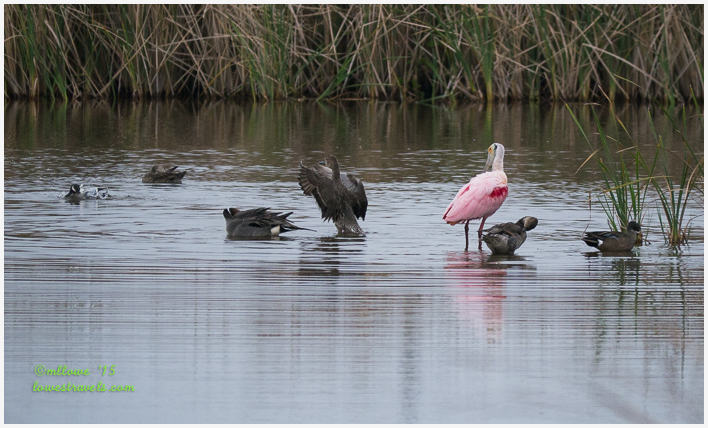
Well, that’s a lot of birds and just a few of the more than 500 documented species that live or migrate here. Even if you are not a birder and you happen to be in Rio Grande Valley, you have to admire these creatures which are everywhere. I can only imagine what it must be like here during the fall and spring migrations – it would be raining birds then! I consider spending time with nature and watching birds in particular a healing energy for myself.


I’m so enjoying your journey to places “off the beaten path”. Thanks for taking us along.
Wow! Beautiful photos! So great that you and Birdie were able to do some bird watching together. Thanks for posting all the information about places to see the birds.
Beautiful post Mona Liza! And your photos are spectacular. This should be an article in a RVing magazine.
Thank you Lisa, that is quite a compliment.
Fantastic! Looks like you managed to see quite the collection of fine feathered friends and have the photographic portfolio to prove it.
I so enjoyed my time here but we are ready to move on. I can’t keep up adding to my gallery, there is just too many birds to snap at. I had you in mind when I included that picture of the hundreds of Red Heads.
I am as green as that parakeet with envy over your fabulous bird pictures and your days with an expert birder. This is a place I must manage to get to on our travels. I love watching the birds as you can tell from my blog. I was lucky enough to take a “birding by ear” course at our local community college with an amazing birder. In fact, I took it more than once but my memory just cannot hold on to those sounds although there are certain birds that I recognize instantly. Just not enough. You and I MUST go birding together at some point. Great post. What fabulous pictures!!
Oh yes Sherry, if your travel brings you down deep south TX, this is one good stop just for the birds. And if you happen to go out west, we have to meet with Laurel and go birding. Crossing my fingers.
Sure sounds like you were in heaven, Mona Liza:) How nice to have a bird expert to teach you so much about your hobby. Glad Steve had things to do to keep him busy so you could totally immerse yourself. The Green Jays are way too cute and, of course, I love the Roseate Spoonbill. You are finding the beauty in the area:)
I was absolutely in bird heaven!
My husband & I have been waiting for your blog on RGV- WOW! You are an inspiration. We are heading down to the Florida Gulf Coast right now to follow the coast west and north to experience spring migration for the first time and are so excited. Thanks so much for sharing all of your wonderful experience and photos. We will follow your lead when in RGV.
Check into our blog sometime to see where we are:
http://talesfromturtleandhawk.blogspot.com
I hope we get to bird together someday:)
Bettina
I think your volunteering is already cut out for you as there are lots of opportunities in Florida. I was not in FL during spring migration but I had a good birding experience in Dauphin Island and Gulf Shores Alabama.
ML, I’ve been waiting for this post and your photos, and they are fabulous! You brought back so many great memories of our time in Mission and our visits to the sites of the World Birding Center. How wonderful that you got to spend so much time with a birding expert. I’d say you’re becoming quite the expert yourself! Wonderful post. 🙂
Laurel I sure wished you and Eric were here too! We are here for a month, can you imagine that. Oh yes, I am only good when I am with a real birder.
that area is a mecca to birders… we are near one here in Arizona called the Chihuahuas, maybe you motivated me to swing down to see if I can find a Trogon… weather permitting
You know, our time in Patagonia, AZ and seeing in that Elegant Trogon there sparked my interest in birds.
I would say that your birding experience was a success MonaLiza! What stunning photos you captured! You are becoming quite the birder. How fortunate to have someone along to show you the ropes.
Thank you LuAnn. I am only good when I am with a real expert birder for without her I would miss those other birds considered very special.
I don’t know MonaLiza! You seem to have come a long way. 🙂
Hey, Girl Friend! It was great to get out with you looking for feathered friends! I, too, am getting prepared to depart this big birding mecca. Have a safe journey and keep looking for those feathers.
Yes I will Birdie and hopefully our paths will cross again so we can check out our winged friends.
Splendid photos, ML. You’re getting to be a real expert!
You really got some fabulous shots, Mona. Loved seeing the American Skimmer. This is a new bird to me. 🙂
Thank you Sylvia. I saw one lone Skimmer in Bonita Springs last winter. So i think they are in Florida too, you just did not get a glimpse of them.
Love the bird photos, especially the green jays, which look like they belong in Australia or the tropics somewhere. We have had some skimmers along the Georgia coast this month–so beautiful with those long beaks splashed with red.